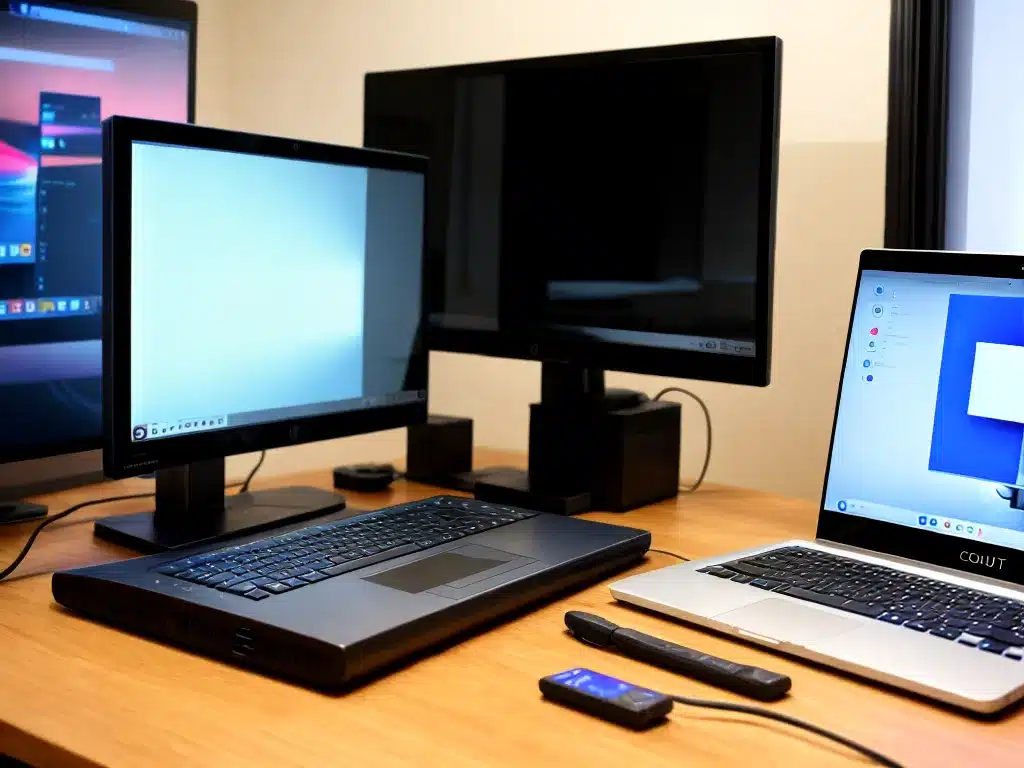
Why Restarting Your Computer is Important
Restarting your computer on a regular basis is an important maintenance task that can help improve performance and prevent issues. Here are some of the key reasons why restarting is beneficial:
-
Clears memory and closes unused processes: When you use your computer over time, memory can get cluttered with temporary files, orphaned registry keys, and programs running in the background. Restarting your PC clears out memory and shuts down any unused processes to free up RAM. This helps keep your computer running fast.
-
Installs updates: Many Windows updates require a restart to fully take effect. Restarting ensures you have the latest security patches and software updates installed and working properly.
-
Resets network components: Network adapters, DNS caches, firewalls, and other networking components are reset when you restart. This can solve connectivity issues and improve internet speeds.
-
Reboots hardware: Restarting fully powers down then powers up your hardware like hard drives, motherboard components, and peripherals. This reboot can fix quirky hardware behavior or performance issues.
-
Clears up software issues: An occasional restart can solve many common software problems like frozen programs, slow performance, crashes, etc. Rebooting essentially provides a “clean slate” for software.
So in summary, restarting your computer regularly provides a quick “tune-up” by clearing memory, installing updates, resetting connections, and rebooting hardware. This maintenance helps prevent deteriorating performance over time.
How Often You Should Restart Your Computer
For most home computers, restarting at least once per week is generally recommended. Here are some best practices:
-
Restart after major software installations or updates – Any time you install a major new piece of software, game, device driver, or Windows update, you should restart immediately after. This ensures it is set up properly.
-
Restart if you notice degraded performance – If your computer begins running slower, apps are freezing/crashing, or you suspect a software or hardware problem – restart first before investigating further. The reboot can often resolve intermittent issues.
-
Restart regularly during lengthy work sessions – If you use your computer continuously all day long, try to restart at least once mid-way through your session, such as after lunch or a few hours into the day.
-
Shut down rather than sleep at night – Unless your computer is a laptop that you take with you, shutting down fully at night is better than just putting it to sleep. This gives a clean restart each morning.
-
Additionally restart after installing Windows updates – Microsoft releases frequent security patches on “Patch Tuesday” – make sure to restart to finish applying them. Important updates may also prompt you to reboot.
-
Restart if your computer is acting strangely – Any erratic behavior, like programs crashing or keys not working, can often be resolved with a restart. Try this first before debugging deeper issues.
So in summary, aim to restart your home desktop at least once per week as general maintenance. More frequent restarts may be needed if you install updates often or notice performance problems.
Tips for Restarting Your Computer Properly
Follow these tips for safely and properly restarting your PC:
- Close any open programs and save your work first – rebooting will abruptly close everything.
- Use the Start Menu > Shut Down option if possible – this will start a proper reboot process.
- Alternatively press Ctrl + Alt + Delete and choose Restart.
- If your computer is frozen, press and hold the power button to force a hard reboot.
- Wait for the reboot process to fully complete including the log-in screen before using your computer again.
- Make sure your computer isn’t performing updates before restarting – let updates fully install first.
- Don’t restart by just turning off the power switch – this improper shutdown can cause issues.
Signs You Should Restart Your Computer
Watch for these signs that indicate it’s time for a reboot:
-
Programs are freezing or crashing – Frequent app crashes or freezes that require forced closes.
-
Computer feels sluggish – Reduced processing speed and very slow response times.
-
Applications won’t launch – Certain apps fail to open when double-clicked.
-
Unresponsive USB ports – Issues connecting or recognizing USB devices.
-
Display problems – Strange behavior with monitors like flickering screens.
-
Internet is slow – Web pages loading slowly and network drives inaccessible.
-
Error messages – Pop-up error messages appear frequently during normal operation.
Whenever you observe these types of problems, try restarting first before investigating other causes. The reboot often resolves temporary glitches.
Conclusion
Restarting your computer regularly is an easy but essential maintenance task. For most home PCs, aim for at least one restart per week as general upkeep. Restart more often if you install updates frequently or notice PC performance declining. Proper rebooting helps keep your system running fast and stable.












